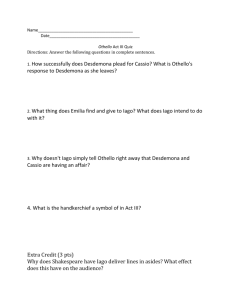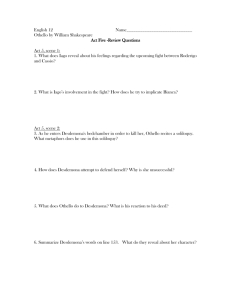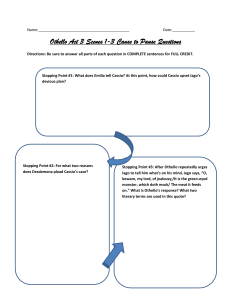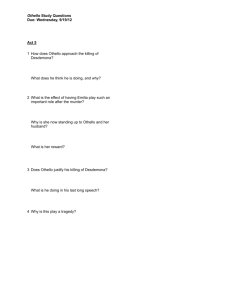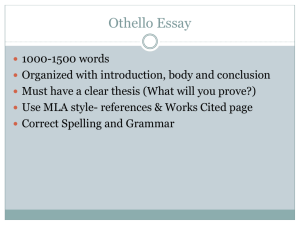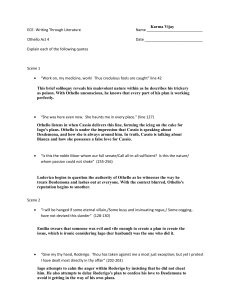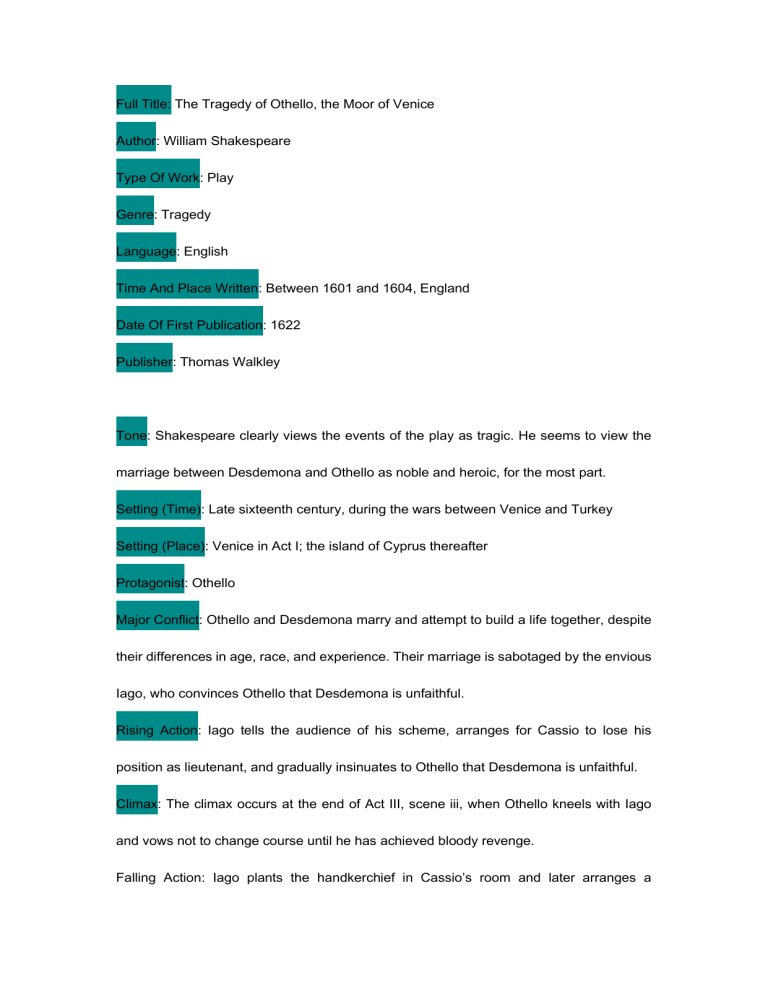
Full Title: The Tragedy of Othello, the Moor of Venice Author: William Shakespeare Type Of Work: Play Genre: Tragedy Language: English Time And Place Written: Between 1601 and 1604, England Date Of First Publication: 1622 Publisher: Thomas Walkley Tone: Shakespeare clearly views the events of the play as tragic. He seems to view the marriage between Desdemona and Othello as noble and heroic, for the most part. Setting (Time): Late sixteenth century, during the wars between Venice and Turkey Setting (Place): Venice in Act I; the island of Cyprus thereafter Protagonist: Othello Major Conflict: Othello and Desdemona marry and attempt to build a life together, despite their differences in age, race, and experience. Their marriage is sabotaged by the envious Iago, who convinces Othello that Desdemona is unfaithful. Rising Action: Iago tells the audience of his scheme, arranges for Cassio to lose his position as lieutenant, and gradually insinuates to Othello that Desdemona is unfaithful. Climax: The climax occurs at the end of Act III, scene iii, when Othello kneels with Iago and vows not to change course until he has achieved bloody revenge. Falling Action: Iago plants the handkerchief in Cassio’s room and later arranges a conversation with Cassio, which Othello watches and sees as “proof” that Cassio and Desdemona have slept together. Iago unsuccessfully attempts to kill Cassio, and Othello smothers Desdemona with a pillow. Emilia exposes Iago’s deceptions, Othello kills himself, and Iago is taken away to be tortured. Themes: The incompatibility of military heroism and love; the danger of isolation Motifs: Sight and blindness; plants; animals; hell, demons, and monsters Symbols: The handkerchief; the song “Willow” Foreshadowing: Othello and Desdemona’s speeches about love foreshadow the disaster to come; Othello’s description of his past and of his wooing of Desdemona foreshadow his suicide speech; Desdemona’s “Willow” song and remarks to Emilia in Act IV, scene iii, foreshadow her death.
